Trekking the Annapurna Circuit is a must-do experience for any adventurous traveler exploring Nepal’s breathtaking landscapes. This iconic trek offers an unparalleled journey through diverse ecosystems, from lush rhododendron forests to the snow-capped peaks of the Annapurna mountain range. Along the way, trekkers will enjoy the vibrant cultures of ethnic communities like the Gurung and Thakali, discovering their unique traditions and customs. With an experienced, government-licensed guide leading the way, hikers can expect a seamless expedition, navigating permits and accommodations with ease. But the true allure of the Annapurna Circuit lies in the personal challenge and sense of accomplishment that awaits those who dare to embark on this remarkable journey.
Key Points
- The Annapurna Circuit Trek traverses diverse landscapes, including lush forests, rugged terrain, and snow-capped peaks over 8,000 meters.
- The trek provides opportunities to encounter indigenous ethnic groups like Gurung, Magar, and Thakali, each with unique cultural traditions.
- A government-licensed guide leads the expedition, providing expertise in trails, local history, and cultural customs.
- Trekkers will stay in cozy tea house accommodations and enjoy 13 lunches, 14 dinners, and 14 breakfasts of Nepali cuisine.
- Moderate cardiovascular endurance, muscular strength, and flexibility are required, and travel insurance is highly recommended for the trek.
Diverse Landscapes
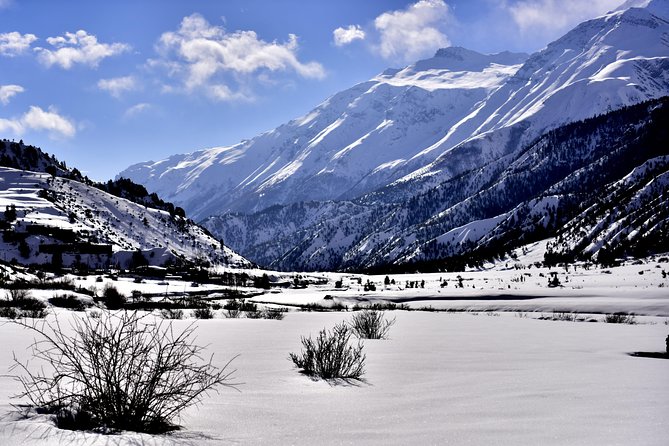
The Annapurna Circuit Trek traverses Nepal’s remarkably diverse landscapes, taking trekkers from lush, verdant forests to rugged, arid terrain and snow-capped peaks towering over 8,000 meters.
As you embark on this classic trek, you’ll pass through a stunning array of environments, from subtropical river valleys to alpine meadows carpeted with wildflowers.
Venture through dense rhododendron forests, past gushing waterfalls, and across high mountain passes offering breathtaking views of the Annapurna massif.
The trek’s diversity is a testament to Nepal’s remarkable geographic and ecological richness, with each section of the route presenting new natural wonders to discover.
This multifaceted journey provides trekkers with an unparalleled window into the country’s sublime landscapes.
Ready to hit more trails? More hiking adventures we feature in Kathmandu
Ethnic Communities

As trekkers traverse the diverse landscapes of the Annapurna Circuit, they’ll have the opportunity to learn about the country’s vibrant ethnic communities. Nepal’s Himalayan region is home to a tapestry of indigenous groups, each with their own distinct cultural traditions, languages, and ways of life. Along the trek, visitors may encounter the Gurung, Magar, and Thakali peoples, among others. These groups have inhabited the Annapurna region for centuries, maintaining rich cultural legacies shaped by the rugged mountain environment.
| Ethnic Group | Key Characteristics |
|---|---|
| Gurung | Agro-pastoralists known for their warrior traditions and intricate textiles |
| Magar | Skilled farmers and crafters with a vibrant oral storytelling culture |
| Thakali | Successful traders and restaurateurs with unique cuisine and language |
Guided Expedition
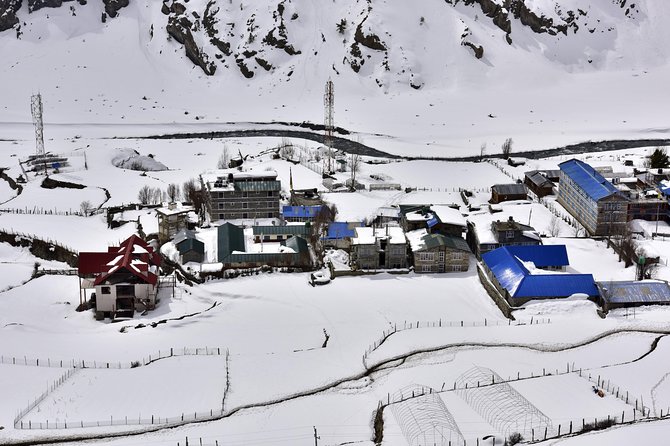
An experienced, government-licensed guide leads the Annapurna Circuit trek, guiding trekkers through the diverse landscapes and sharing insights into the region’s rich cultural heritage.
These expert guides have in-depth knowledge of the trails, local history, and customs, ensuring trekkers have a safe and enriching journey.
The guides expertly navigate the ever-changing terrain, from lush forests and roaring waterfalls to arid plains and snow-capped peaks.
They provide detailed information about the various ethnic communities encountered along the way, fostering a deeper appreciation for Nepal’s vibrant cultural tapestry.
With the guide’s expertise, trekkers can enjoy the heart of the Hindu kingdom, experiencing its natural wonders and gaining a profound understanding of the local way of life.
Accommodation and Meals
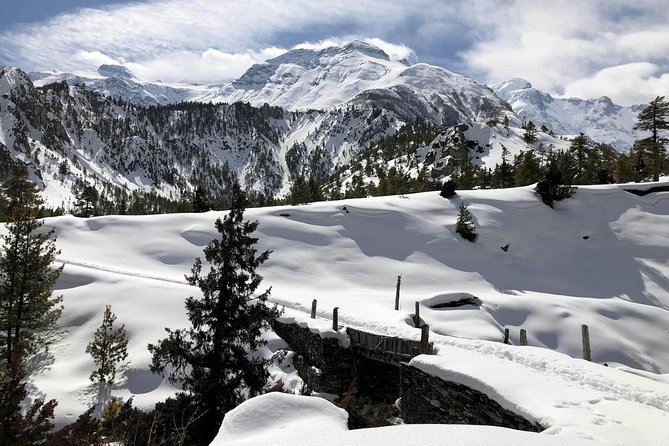
Throughout the Annapurna Circuit trek, trekkers stay at cozy tea house accommodations, which provide a comfortable respite from the trail. These locally-run lodges offer basic rooms, typically with twin beds and shared bathroom facilities.
Hearty Nepali meals – including 13 lunches, 14 dinners, and 14 breakfasts – are served at the tea houses, allowing trekkers to refuel and refocus for the day’s journey. The meals feature a variety of local dishes, from dal bhat (rice and lentils) to momos (dumplings), ensuring trekkers experience authentic Nepalese cuisine.
Drinking water is also provided at the tea houses, though travelers may opt for bottled or boiled water at an additional cost.
Transportation and Permits
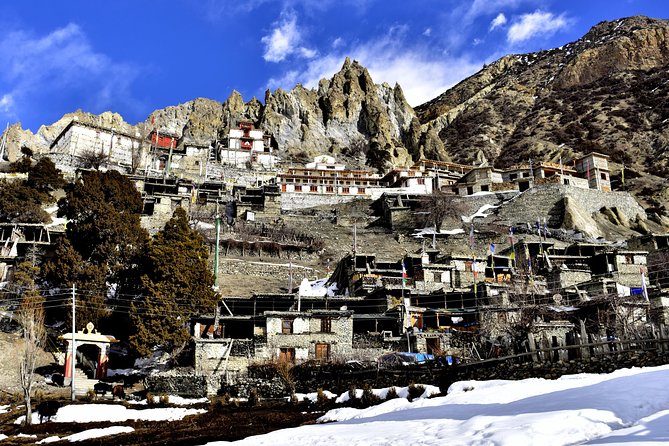
Local bus transportation takes trekkers from Kathmandu to the trek’s starting point at Bulbule, setting the stage for the immersive Annapurna Circuit experience. Upon completing the trek, private transportation shuttles travelers from the endpoint back to the vibrant city of Pokhara. Throughout the journey, necessary permits are arranged, including the Annapurna Conservation Park Fees and TIMS (Trekkers’ Information Management System) Fee, ensuring full compliance with Nepal’s trekking regulations.
| Transportation | Annapurna Conservation Park Fees | TIMS Fee |
|---|---|---|
| Local Bus from Kathmandu to Bulbule | $30 USD per person | $20 USD per person |
| Private Transport from Trek Endpoint to Pokhara | Included in Tour Cost | Included in Tour Cost |
- Everest Base Camp Helicopter Tour Stop at Everest View Hotel
- Private Kathmandu Sightseeing Tour – UNESCO World Heritage Sites
- Everest Base Camp Helicopter Tour Landing at Hotel Everest View
- 14-Day Private Annapurna Base Camp Trek
- Everest Base Camp Trek-12 Days
- 200 Hours Yoga Teacher Training at Nepal Yoga Home (Starts on 1st of Everymonth)
Physical Fitness Level
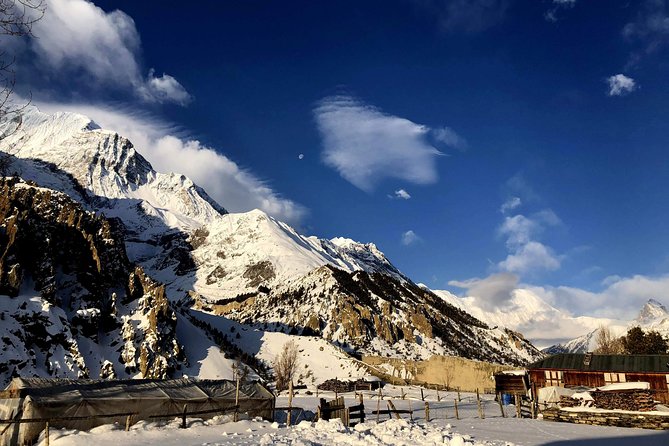
Travelers opting for the Annapurna Circuit Trek require a moderate level of physical fitness, as the trek involves long, strenuous days of hiking through varied terrain. While the trek is manageable for those with a good baseline of endurance, it’s not recommended for individuals with serious medical conditions, back problems, or limited mobility. Proper preparation and training are essential to ensure a safe and enjoyable trekking experience.
The Annapurna Circuit Trek demands:
- Cardiovascular endurance for extended periods of hiking
- Muscular strength to navigate steep ascents and descents
- Flexibility to maintain proper form and reduce injury risk
- Stamina to withstand the demands of high-altitude trekking
- Adaptability to cope with changes in weather and trail conditions
Travel Insurance
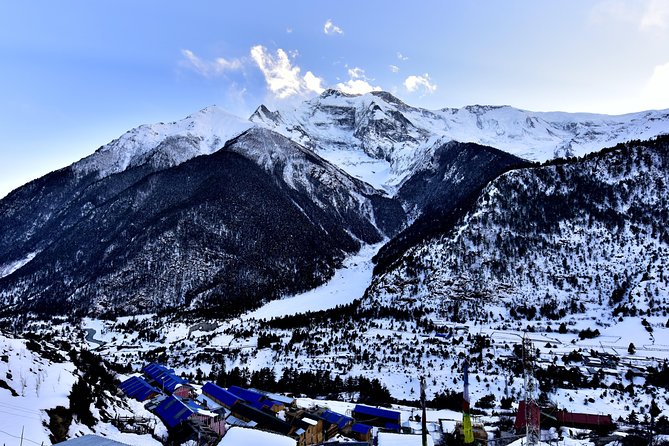
Travel and rescue insurance is an essential inclusion for the Annapurna Circuit Trek, providing critical coverage and support in the event of any medical emergencies or unexpected situations during the expedition.
This comprehensive insurance package safeguards trekkers against the risks inherent to high-altitude trekking, ensuring they can access prompt medical care and, if necessary, arrange for timely evacuation and transportation back to their point of origin.
The policy covers medical expenses, including hospitalization, emergency evacuation, and repatriation, should a participant require urgent medical attention. Plus, it provides coverage for trip cancellation or interruption, lost or stolen baggage, and other unforeseen circumstances that could disrupt the trek.
This safety net gives trekkers peace of mind, allowing them to fully enjoy the adventure without worrying about potential financial risks.
Personal Expenses
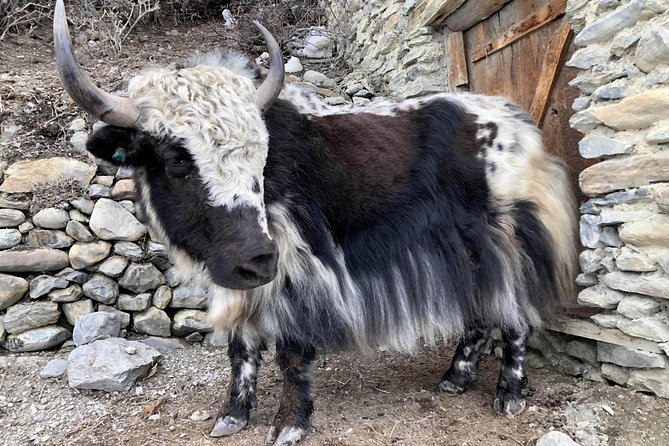
While the Annapurna Circuit Trek’s inclusions cover the major expenses, one can expect certain personal costs to arise throughout the journey. These may include charges for phone calls, laundry services, bar bills, battery recharging, hiring additional porters, and purchasing bottled or boiled water or shower access. Though not explicitly included in the package, these discretionary expenses allow trekkers to customize their experience and accommodate personal preferences or needs during the trek.
Some common personal costs on the Annapurna Circuit Trek may include:
- Snacks and drinks beyond the provided meals
- Tipping guides and porters
- Purchasing additional warm clothing or gear
- Paying for hot showers at tea houses
- Covering the cost of any medical emergencies or evacuation
Frequently Asked Questions
What Is the Average Group Size for This Trek?
The average group size for this type of guided trekking expedition is typically small, ranging from 2 to 8 participants. This allows for more personalized attention from the expert guide and a more intimate group dynamic during the journey.
Are Solo Travelers Welcome on This Expedition?
Solo travelers are welcome on this expedition. The tour operator accommodates solo participants and encourages single travelers to join the guided group. However, the minimum group size requirement must still be met for the trek to operate.
Can I Customize the Itinerary to Suit My Preferences?
Yes, the itinerary can often be customized to suit one’s preferences. Many tour operators offer flexibility to adjust the trek duration, difficulty level, and activities based on the traveler’s interests and fitness level.
What Is the Best Time of Year to Attempt This Trek?
The best time to attempt this trek is typically from September to November or March to May. These seasons offer the most favorable weather conditions, with clear skies, moderate temperatures, and minimal rainfall, making the trek more comfortable and enjoyable.
Can I Extend My Stay in Pokhara After the Trek?
Yes, travelers can extend their stay in Pokhara after the trek. Pokhara is a popular destination with various attractions, so visitors often add extra days to explore the lakeside town and its surroundings at their leisure.
Recap
The Annapurna Circuit Trek offers an unparalleled adventure through Nepal’s diverse landscapes, immersing trekkers in the vibrant cultures of ethnic communities.
With a knowledgeable guide, hikers will enjoy comfortable tea house accommodations and Nepali cuisine, while navigating transportation and permits.
Suitable for moderately fit individuals, this trek promises an immersive experience amidst Nepal’s remarkable geographic and cultural richness.
More Hiking & Trekking Tours in Kathmandu
More Tour Reviews in Kathmandu
Not for you? Here's more things to do in Kathmandu we have recnetly reviewed
- 2 Best Guided Tours In Jagat
- 20 Best 2 Day Tours In Kathmandu
- 20 Best 3 Day Tours In Kathmandu
- 20 Best 4 Day Tours In Kathmandu
- 8 Best Dining Experiences In Kathmandu
- 20 Best Full-Day Tours In Kathmandu
- 25 Best Helicopter Flights And Tours In Kathmandu
- 25 Best Helicopter Flights And Tours In Kathmandu
- 13 Best Massage And Relaxation Services In Kathmandu
- 5 Best Photography Experiences In Kathmandu
- 8 Best Dinner Tours In Kathmandu
- 17 Best Lunch Experiences In Kathmandu
